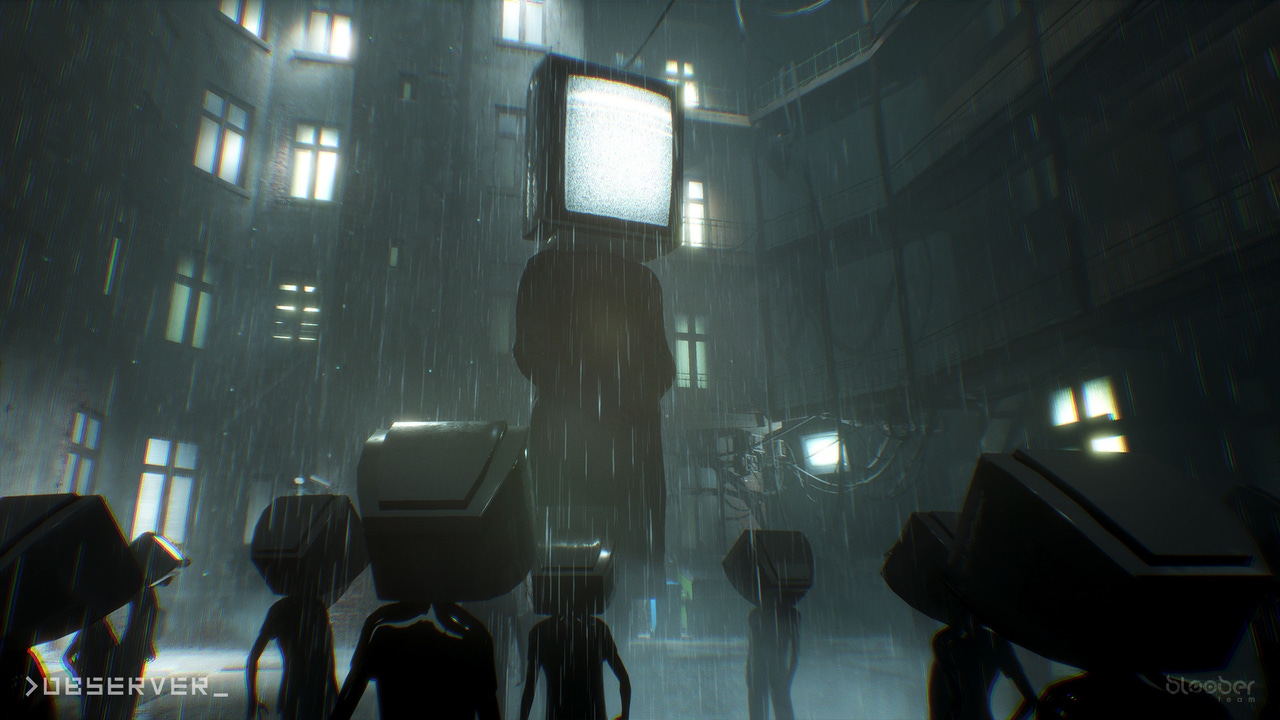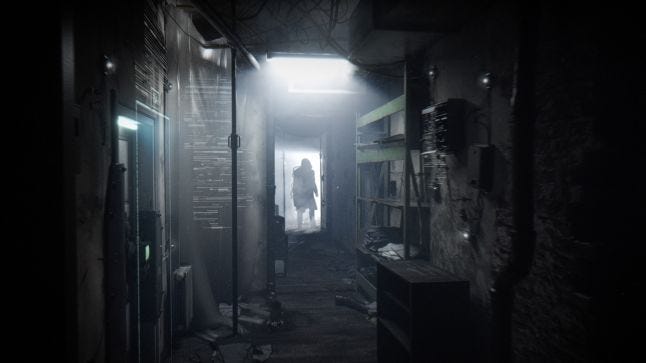
Image via Bloober Team.
Observer is a cyberpunk horror game from Polish studio Bloober Team, who also developed Layers of Fear. They take pains to say that their latest title it isn't a survival horror experience--they prefer to call it "hidden horror" or "catharsis 2.0."
Gamasutra had the pleasure of talking to Bloober's Rafal Basaj about making the game in a recent Twitch stream. He discussed how the team wrestled with whether or not to incorporate distinctly Polish trappings and locales in the game, how they sold its unique brand of scares to the public, and how they settled on pricing.
We've transcribed some of the more interesting passages of the conversation below.
You can watch the stream embedded above, or click here to see it. And for more developer insights, editor roundtables, and gameplay commentary, be sure to follow the Gamasutra Twitch channel.
STREAM PARTICIPANTS:
Alex Wawro, editor at Gamasutra
Kris Graft, editor in chief of Gamasutra
Rafal Basaj, brand manager at Bloober Team
Observer's origin story
Graft: What was the inspiration behind Observer? Obviously, there are cyberpunk vibes going on here, can you talk a little bit about the idea came to be?
"The main writer of Layers of Fear, Andrzej Madrzak, came to us with two page-and-a-half story outlines. I don't remember the other one but the first one was cyberpunk-horror. We loved the idea."
Basaj: When we were finishing Layers of Fear, going from early access to the full release, we were thinking about our next project, and one of our ideas was to change the setting as much as we can, to do something else unconnected with horror, we wanted to explore some other environments. So we asked the main writer of Layers of Fear, whose name is Andrzej Madrzak, whose name is a pain to pronounce for anyone outside of Poland. (laughs)
So the guy said, "Okay, I'm going to write a few things up and see where it leads." He came back to the office around a week later, I believe it was around December 2015 or so, and he was like, "I have two scripts. They're completely different." There was like a page-and-a-half for each story, it was a very small gist of an idea. I don't remember the other one but the first one was basically cyberpunk-horror. And a lot of that idea stuck in the game.
The plot was meant to be in that old tenement building. He gave us the script when we were in a meeting of a few people who were running the projects in the company. They went for it: "Okay, we're doing this." We love the idea. Cyberpunk/horror? Let's do it!

"It was a no-brainer for us to bring it to central Europe, thinking about how our world looked like in the 80s and early 90s when cyberpunk was huge. We added Soviet-style propaganda that was close to our history."
No one has done it to the extent that we were thinking about it, focusing more on that horror but leaving cyberpunk in it as a huge part of the game. That was the moment where we started conceptualizing everything, very slowly at first, because we were still finishing up Layers of Fear obviously, but we needed to get work started, so we start picking up on what we could do, what we could be inspired by in the game.
It was really cool and, going into the project, watching the first Blade Runner, playing some pen-and-paper RPG Cyberpunk 2020, going through a shitload of comic books, everything connected to cyberpunk basically. It was a really cool ride for us. One of the ideas we had at the very beginning of that game was how we wanted to establish our world, how we were going to be different from the American or Japanese cyberpunk.
It was a no-brainer for us to bring it to the central part of Europe, thinking about how our world looked like in the 80s, the beginning of the 90s, when cyberpunk was huge around the world. We figured out that cyberpunk was about huge corporations. We added Soviet-style propaganda that was close to our history. Also, that was a moment where we could figure out if we wanted to do something more retro, to make a huge homage to the golden times of cyberpunk. I believe it worked out well.

Graft: Yes, and it's interesting to hear you talk about, you immerse yourself in the American and Japanese cyberpunk aesthetic, the tropes in those genres, but that has me thinking, are there really that many Polish cyberpunk stories out there? You've injected your culture into the genre.
"We were thinking about how we could incorporate our culture, our pop-culture, and our history as small ideas that will make the game whole, in a sense."
Basaj: There are at least a few good books on the verge of cyberpunk and science fiction from Polish authors, but most of all what we were thinking about how we could incorporate our culture, our pop-culture, and our history as small ideas that will make the game whole, in a sense.
I remember at one point when we were discussing whether including local influences in the game would make it less understandable for a Western audience. Basically, that was also the moment where I figured out that for a lot of people it will be aesthetics, that they won't see those things, but it will be different for them. It will feel different, like, in the sequence we're streaming right now, you see all this kitchen furniture. That was the furniture that almost every household had in Poland. So, now even, when we go to our grandparents, you might find in their homes the same furniture that we have here in the game.
There's a lot of these small things that a Western audience doesn't know that are references to culture and history. But that was part of the idea, we wanted people from to find all of those easter eggs of world-building elements. And for all other people who don't want to delve into to figure out how level design is made or how everything worked out, they just wanted to play the game... it's something they know is similar to their world, just a little bit different. So, that was our aim when it came to Observer.

Selling the game to a global audience
Graft: You worked on, at least with this project, the marketing and a little on the business side. So selling a game like this, you're coming up with some terms that can be used to market the game: "catharsis 2.0," "hidden horror." Those are some terms that you can turn into talking points when you're talking to people like us. What's the toughest part about marketing a game like this, though?




































